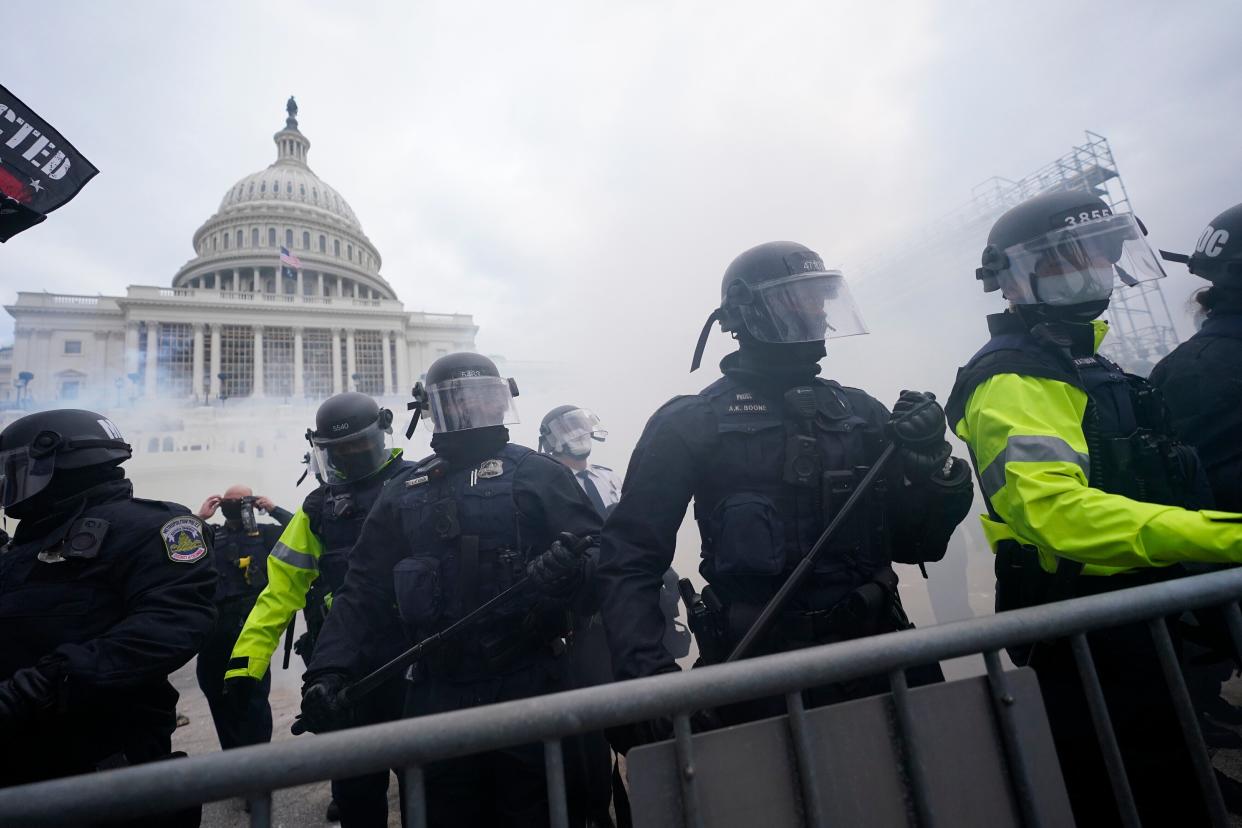Far-right extremism tied to 73 domestic terror plots in 2020, report finds

Racist and anti-government terror attacks perpetrated by far-right Americans have driven the rates of “domestic terror” in the US, which soared in 2020 to at least 73 incidents, its highest level since at least 1994.
Right-wing extremist violence has been tied to 267 terror plots or attacks and at least 91 deaths since 2015, according to The Washington Post’s analysis of data compiled by the Center for Strategic and International Studies.
The centre’s database examines “domestic terrorism” incidents, which it defines as “deliberate use – or threat – of violence by non-state actors in order to achieve political goals and create a broad psychological impact”.
Its analysis does not cover hate speech or hate crimes.
The number of right-wing incidents in 2020 marked an all-time high for the centre’s database, which includes data that dates from 1994.
“White supremacists, extremist militia members, and other violent far-right extremists were responsible for 66 percent of domestic terrorist attacks and plots in 2020 – roughly consistent with their share in other recent years,” the report found.
The report also found that a growing number of active-duty military personnel and reservists have participated in domestic terror attacks and plots – the number of service members involved in terror attacks surged to 6.4 per cent in 2020 from 1.5 per cent in 2019.
Last year, active-duty personnel perpetrated 4.5 per cent of the attacks, and reservists conducted 1.8 per cent, according to the report.
“The data should serve as a cautionary tale,” the centre said. “While the numbers are relatively low, they are growing – and the military and law enforcement agencies need to take preventive action now.”
The database includes 980 incidents of “domestic terror” on US soil since that year through the end of January 2021. Attacks or plans of attacks in the database are categorised as “ethnonationalist, religious, violent far-left, violent far-right, and other”.
More than a quarter of right-wing incidents and nearly half of all deaths in those cases since 2015 were linked to white supremacists or groups espousing that ideology, according to the report.
Within that same time frame, the centre found 66 plots or attacks and 19 deaths ascribed to people with far-left views.
The centre counted 25 left-wing attacks in 2020, which included attempts to block oil pipeline construction as well as attacks targeting police facilities during protests against police violence that year.
Data from 2021 includes the Capitol insurrection, among 11 far-right terror incidents that month.
The report follows warnings from federal law enforcement about the rise in white supremacist and racist violence in the US, and fears that the deadly assault on the Capitol on 6 January emboldened far-right groups to commit more violence.
Last month, FBI Director Christopher Wray told members of Congress for a second year in a row that the nation’s “top threat” remains racially or ethnically motivated domestic violent extremists.
The FBI has formally elevated the threat from white supremacist groups to its top priority level, alongside Isis, Mr Wray said.
He said that the FBI is reviewing 2,000 domestic terrorism cases.
The Department of Homeland Security issued a terrorism advisory bulletin due to a “heightened threat environment” across the US in the wake of Joe Biden’s inauguration.
Federal law enforcement has warned that anti-government “ideologically motivated violent extremists” motivated by “perceived grievances fuelled by false narratives” could “continue to mobilise to incite or commit violence”, the agency announced in January.
That bulletin remains in effect through April.
Read More
Somalia’s parliament votes to extend president’s mandate
American faces jail in Dubai after smoking cannabis legally in the US
Cardiologist says police, not drug overdose, killed George Floyd

